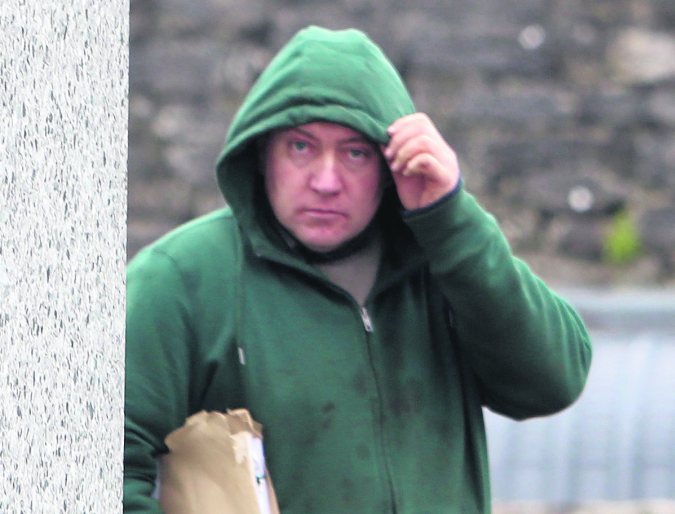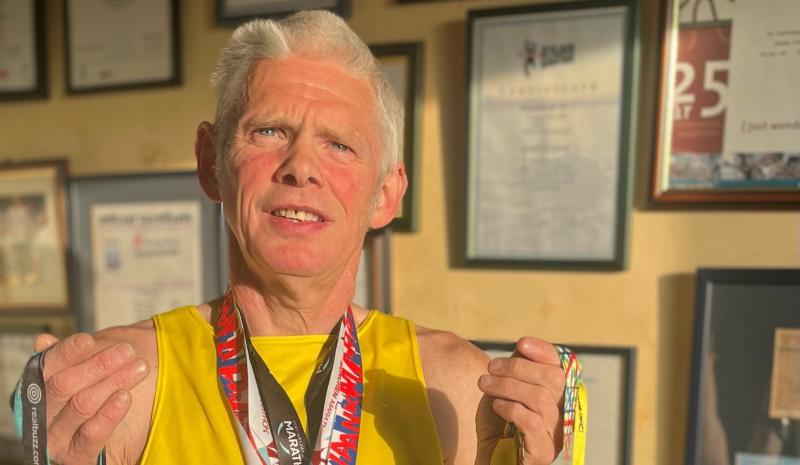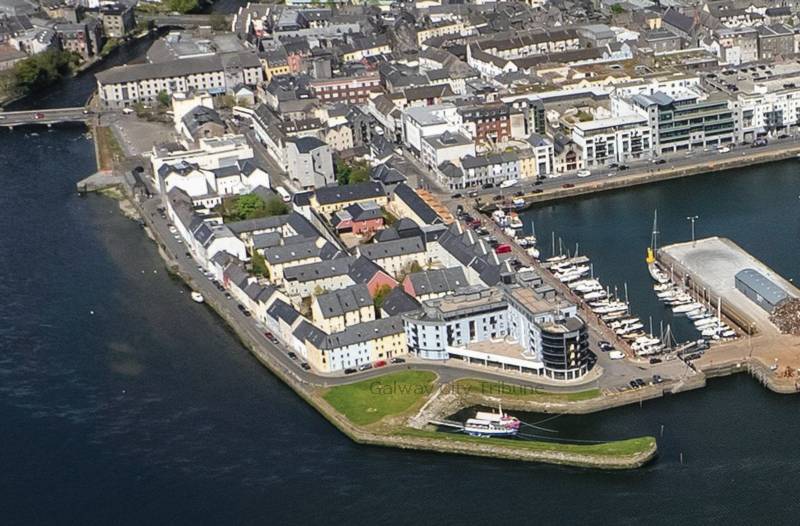News
Farmer fined over ‘toxic’ yard

A County Galway farmyard where animals had been ill-treated was last week described as “an environmental, health and safety catastrophe for both humans and animals.”
“The yard is so toxic that anyone who does work there has to dispose of all of their clothes,” Superintendent veterinary inspector Michael O’Brien told a sitting of Loughrea District Court during the hearing of a case where the farmer admitted three charges of ill-treating lambs and permitting a carcass to remain unburied.
Before the court was 46 year old farmer PJ Shiel of Reaskmore, Craughwell, who was stated to have over 60 previous convictions and was accused by the veterinary inspector of making no effort whatsoever to improve conditions on his 160 acre farm over the past three years.
Mr O’Brien told the court there were on-going problems on the farm where there was actually no gates or fencing, except for what was erected by neighbouring farmers, and animals grazed and then came out onto the road.
He recalled a visit he paid to the farm on November 15 2013 when he found two lambs in a trailer which were “skin and bone” because they had not been fed for some considerable time and there was no feed or water.
He also discovered an unburied four or five month old weanling in a shed which he estimated had been dead for five or six weeks and whose hoofs had come away.
He described a field strewn with all kinds of machinery and a lot of barbed wire in loops which animals could walk through. Only three animals had been sold from this farm, and 22 animals had gone to the knackers’ yard. He could only guess that these animals had died on the farm.
Mr O’Brien went on to tell Judge Geoffrey Browne of serious difficulties they had with getting Mr Shiel to get tests done on his animals or register calves.
There was in breeding on the farm and he was not co-operating with a campaign to eradicate a very nasty disease known as BVD.
This campaign was paid for by farmers but it involved animals being tagged and tested and required “one hundred per cent buy-in” by the farmers.
Witness told Judge Browne that he would guess there were about seventy bovines on the farm and about the same number of sheep.
Inspector Mick O’Dwyer told the court that there were over sixty previous convictions against the accused including convictions for cruelty to animals, leaving carcases unburied, and offences in regard to TB notices.
In reply to Gearoid Geraghty, solicitor for the accused, Mr O’Brien said he had visited the farm a few days prior to the court case and found the animals in good shape. His concern was for the health of his own officials and anyone else who would be doing work on the farm.
He said that Mr Shiel was in receipt of a single farm payment and if he got out of livestock completely, and let the farm, he would still get the single payment and would have more money.
Vincent Costello, an agricultural consultant, gave evidence of monitoring the farm over the last two years during which time the big issue concerned the welfare of animals, and how the feeding of cattle was now not a problem.
He did agree with Mr. O’Brien about the farm yard and said that he would be prepared to oversee the rectifying of structural difficulties and a clean-up, if Mr Shiel co-operated.
Mr. Geraghty told the court that his client lived alone with his 81 year old mother who was in court with him. The defendant had significant health problems and had spent eighteen days in Portiuncula hospital following a stroke.
He agreed that it was a very difficult case but said his client “had come to his senses” and he asked that the matter be adjourned for six months.
Judge Browne said the situation on the farm was “an absolute disgrace” and the defendant had done nothing about it, despite convictions in the Circuit Court in 2011.
He imposed a fine of €750 on one of the cruelty charges and made an order prohibiting the accused from keeping no more than five animals at any given time, but only on condition that all necessary veterinary procedures were carried out on the animals.
He also imposed a fine of €500 for permitting the carcase of a livestock to remain unburied in an open shed.
Connacht Tribune
West has lower cancer survival rates than rest

Significant state investment is required to address ‘shocking’ inequalities that leave cancer patients in the West at greater risk of succumbing to the disease.
A meeting of Regional Health Forum West heard that survival rates for breast, lung and colorectal cancers than the national average, and with the most deprived quintile of the population, the West’s residents faced poorer outcomes from a cancer diagnosis.
For breast cancer patients, the five-year survival rate was 80% in the West versus 85% nationally; for lung cancer patients it was 16.7% in the west against a 19.5% national survival rate; and in the West’s colorectal cancer patients, there was a 62.6% survival rate where the national average was 63.1%.
These startling statistics were provided in answer to a question from Ballinasloe-based Cllr Evelyn Parsons (Ind) who said it was yet another reminder that cancer treatment infrastructure in the West was in dire need of improvement.
“The situation is pretty stark. In the Western Regional Health Forum area, we have the highest incidence of deprivation and the highest health inequalities because of that – we have the highest incidences of cancer nationally because of that,” said Cllr Parsons, who is also a general practitioner.
In details provided by CEO of Saolta Health Care Group, which operates Galway’s hospitals, it was stated that a number of factors were impacting on patient outcomes.
Get the full story in this week’s Connacht Tribune, on sale in shops now, or you can download the digital edition from www.connachttribune.ie. You can also download our Connacht Tribune App from Apple’s App Store or get the Android Version from Google Play.
Connacht Tribune
Marathon Man plans to call a halt – but not before he hits 160 races

On the eve of completing his 150th marathon, an odyssey that has taken him across 53 countries, Loughrea’s Marathon Man has announced that he is planning to hang up his running shoes.
But not before Jarlath Fitzgerald completes another ten races, making it 160 marathons on the occasion of his 60th birthday.
“I want to draw the line in 2026. I turn 57 in October and when I reach 60 it’s the finishing line. The longer races are taking it out of me. I did 20 miles there two weeks ago and didn’t feel good. It’s getting harder,” he reveals.
“I’ve arthritis in both hips and there’s wear and tear in the knees.”
We speak as he is about to head out for a run before his shift in Supervalu Loughrea. Despite his physical complaints, he still clocks up 30 miles every second week and generally runs four days a week.
Jarlath receives injections to his left hip to keep the pain at bay while running on the road.
To give his joints a break, during the winter he runs cross country and often does a five-mile trek around Kylebrack Wood.
He is planning on running his 150th marathon in Cork on June 4, where a group of 20 made up of work colleagues, friends and running mates from Loughrea Athletics Club will join him.
Some are doing the 10k, others are doing the half marathon, but all will be there on the finishing line to cheer him on in the phenomenal achievement.
Get the full story in this week’s Connacht Tribune, on sale in shops now, or you can download the digital edition from www.connachttribune.ie. You can also download our Connacht Tribune App from Apple’s App Store or get the Android Version from Google Play.
CITY TRIBUNE
Galway ‘masterplan’ needed to tackle housing and transport crises

From the Galway City Tribune – An impassioned plea for a ‘masterplan’ that would guide Galway City into the future has been made in the Dáil. Galway West TD Catherine Connolly stated this week that there needed to be an all-inclusive approach with “vision and leadership” in order to build a sustainable city.
Deputy Connolly spoke at length at the crisis surrounding traffic and housing in Galway city and said that not all of the blame could be laid at the door of the local authority.
She said that her preference would be the provision of light rail as the main form of public transport, but that this would have to be driven by the government.
“I sat on the local council for 17 years and despaired at all of the solutions going down one road, metaphorically and literally. In 2005 we put Park & Ride into the development plan, but that has not been rolled out. A 2016 transport strategy was outdated at the time and still has not been updated.
“Due to the housing crisis in the city, a task force was set up in 2019. Not a single report or analysis has been published on the cause of the crisis,” added Deputy Connolly.
She then referred to a report from the Land Development Agency (LDA) that identified lands suitable for the provision of housing. But she said that two-thirds of these had significant problems and a large portion was in Merlin Park University Hospital which, she said, would never have housing built on it.
In response, Minister Simon Harris spoke of the continuing job investment in the city and also in higher education, which is his portfolio.
But turning his attention to traffic congestion, he accepted that there were “real issues” when it came to transport, mobility and accessibility around Galway.
“We share the view that we need a Park & Ride facility and I understand there are also Bus Connects plans.
“I also suggest that the City Council reflect on her comments. I am proud to be in a Government that is providing unparalleled levels of investment to local authorities and unparalleled opportunities for local authorities to draw down,” he said.
Then Minister Harris referred to the controversial Galway City Outer Ring Road which he said was “struck down by An Bord Pleanála”, despite a lot of energy having been put into that project.
However, Deputy Connolly picked up on this and pointed out that An Bord Pleanála did not say ‘No’ to the ring road.
“The High Court said ‘No’ to the ring road because An Bord Pleanála acknowledged it failed utterly to consider climate change and our climate change obligations.
“That tells us something about An Bord Pleanála and the management that submitted such a plan.”
In the end, Minister Harris agreed that there needed to be a masterplan for Galway City.
“I suggest it is for the local authority to come up with a vision and then work with the Government to try to fund and implement that.”












